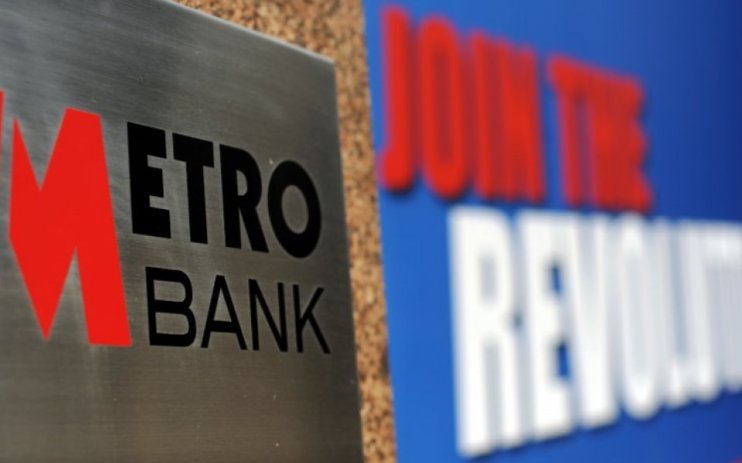Metro Bank fundraise averts immediate threat – but what next?

Metro Bank’s emergency capital raise has reassured investors for the moment.
After a weekend in which regulators were reportedly seeking buyers for parts or all of Metro Bank, it announced a major new refinancing package late last night that will mean it can live to fight another day.
The refinancing includes a £325m capital raise, led by existing shareholder Spaldy Investments, alongside £600m of debt refinancing. The equity raise will materially dilute the shareholding of existing shareholders while holders of the bank’s tier 2 bonds will see a 40 to 45 per cent haircut.
Its shares were trading over 13 per cent higher on Monday, reflecting relief that the bank had avoided collapse.
But analysts warned the bank needed to develop a more convincing investment case if it is going to have a stronger future.
“The rescue package secured by Metro Bank appears to have averted the immediate threat of a takeover by another UK bank, or potential break-up,” Joanna Ford, restructuring & insolvency partner at Cripps, said.
“It will now need to take steps to ensure that the causes of the balance sheet deficit are addressed so the cash injection is not just a temporary fix,” she continued.
Metro Bank’s problem, analysts argue, is that its business model is too costly for the size of its balance sheet.
The bank is one of the few lenders to have committed to a branch network, which also makes it an unattractive takeover target at a time when other lenders are cutting their presence on the high street.
“A high-cost base is unsustainable, so something has to change. If not, Metro Bank might find itself gobbled up by a bigger company whose first job will be to shut down its expensive branch network,” AJ Bell’s investment director Russ Mould said.
On a call with analysts this morning, boss Dan Frumkin defended the branch focused model arguing “there’s nothing wrong with the Metro business model – it has a huge potential to deliver for all stakeholders.”
Looking deeper, the bank also faces some regulatory hurdles, which constrain the size of its lending book.
Analysts at S&P said “its balance sheet efficiency is constrained by its regulatory capital charges that are higher than those of larger peers.”
For the last five years, Metro Bank has been working with the Prudential Regulation Authority (PRA) to secure approval for the use of internal risk models for its residential mortgage business.
This would mean Metro Bank would hold a lower level of capital against mortgage lending than using the PRA’s standardised models. The UK’s largest banks are already able to use internal models.
However, last month the PRA said “more work is required” for the bank to use internal models. It admitted that it may never secure approval. Without freeing up more capital, Metro Bank cannot increase its lending book.
It is unclear if, or when, the PRA will reach a decision on this point.
Analysts at investment banking firm Keefe, Bruyette & Woods (KBW) summarised “the fundamental challenge for Metro is that they do not have a large enough balance sheet for the current cost base”.
Alongside the capital raise, Metro Bank has said it is still in discussions to sell up to £3bn worth of residential mortgages, which makes up around 40 per cent of its total mortgage book.
Lloyds, Natwest and Santander UK are all reportedly interested in buying parts of Metro Bank, which could include its mortgage book.
Metro Bank will then seek to pivot into specialist mortgages and commercial loans, which are higher yielding than the intensely competitive residential mortgage market.
“The asset sale will likely attract decent interest, particularly in an environment where there is limited opportunity for organic loan growth for the sector,” analysts at KBW said.
But they said Metro will “likely have to recognise a considerable loss” on the mortgage book as higher interest rates have made older residential mortgages less attractive.